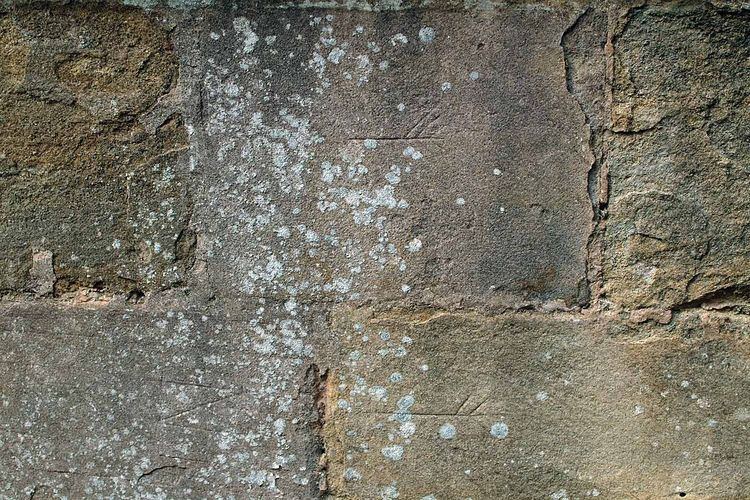 | ||
A mason's mark is a symbol often found on dressed stone in buildings and other public structures.
Contents
In stonemasonry
Scottish rules issued in 1598 stated that on admission to the guild, every mason had to enter his name and his mark in a register.
There are two types of marks used by stonemasons.
- Layout marks, which delineated the position of a piece of stone in the overall design. Since stone was usually worked at the quarry or in the masons' yard, rather than in situ, such marks were necessary for efficient operations. Medieval carpenters also used this sort of mark.
- "Signature" marks that pertained to a particular mason or workshop. This is what is generally meant by the term. Merchants also had such marks, used to mark their goods.
The exact purpose of mason's marks is unclear, although it is generally assumed that they mark the working of a piece of masonry by a particular mason, in order to claim payment. Others are assumed to indicate the position in which a stone should be laid. It has also been suggested that marks indicate the origin of the stone, or the location in which it was worked.
In Freemasonry
Freemasonry, a fraternal order that uses an analogy to stonemasonry for much of its structure, also makes use of marks. A Freemason who takes the degree of Mark Master Mason will be asked to create his own Mason's Mark, as a type of unique signature or identifying badge. Some of these can be quite elaborate.
